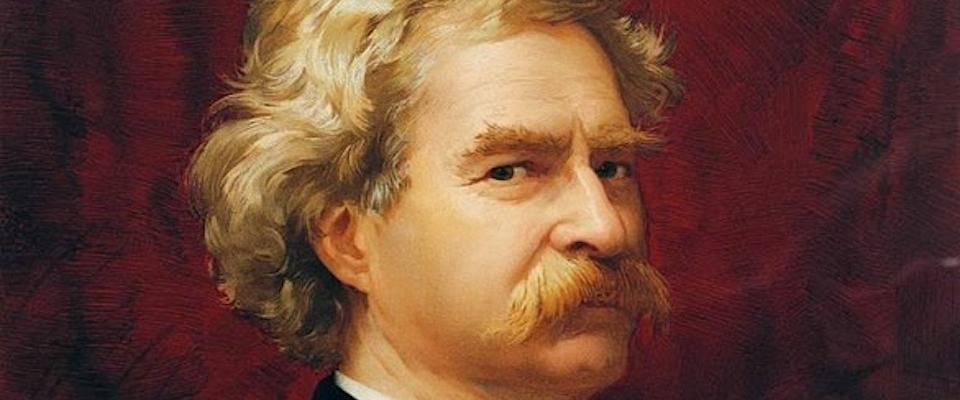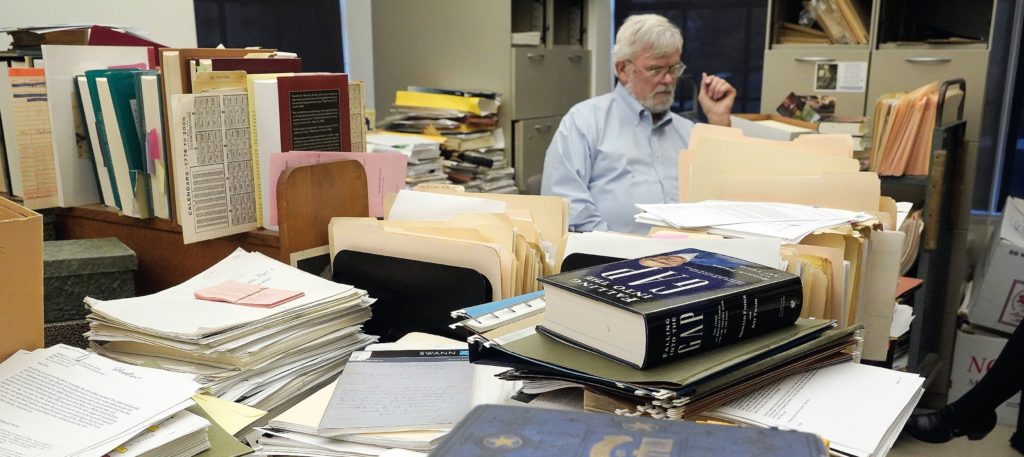Would Mark Twain tweet if he were around today? Quite likely—he was an enthusiastic early adopter of the high-tech media of his era and an aphoristic genius. “Not that he’d tell the world what he had for breakfast,” says the Bancroft Library’s Harriet Smith, one of the editors of the two recently published volumes of The Autobiography of Mark Twain.
Yet even as he tweeted Twain would likely have railed against the evils of the new media. That’s the take from Smith and other leading Twain scholars at the University of California’s famed Mark Twain Papers & Project, which houses a vast archive of Twain’s manuscripts, notebooks, and more than 11,000 letters. The project’s main mission is to produce scholarly editions of Twain’s published and unpublished work, more than 30 volumes of which have already appeared in scrupulously annotated editions, most under the guidance of General Editor and Curator Bob Hirst. Increasingly, they are also ushering Twain’s work into the digital age: So far 10 volumes of his autobiography and letters, plus numerous images, are searchable online or available as e-books. “Much has been accomplished, much remains to be done,” editor Ben Griffin says.
Twain was a very careful wordsmith who would have found effusive tweeting and blogging a fine target for his sarcasm, editors Griffin and Vic Fischer noted. After all, he once said that a successful book is “not made of what is in it, but of what is left out of it.”
The group doesn’t doubt that Twain would latch onto word processing, since he was among the first American authors to use a typewriter, and likely the first to denounce it as well. Not long after he acquired the device he began grousing about it and wound up offering it to his close friend and advisor William Dean Howells, writing, “I’ll sell it to you for the twelve dollars … or I’ll gladly send it to you for nothing if you choose (for, plainly to be honest, I think $12 is too much for it.)” Where’d I find that quote? Not from these brilliant editors in person, but online, at the Mark Twain Project’s website!
A similar ambivalence affected his relationship to the telephone, which he acquired so early he had almost nobody to call. He’d rail against it, editor Michael Frank says, but he also hailed it as a wonder of human progress: “Yes, indeed, great is the telephone…. Confound the thing, its marvels bewitch me…. For we do live in an age compared to which all other ages are dull & eventless,” he exulted in one letter. But years later he consigned the phone’s inventor to Hell: “It is my heart-warm and world-embracing Christian hope and aspiration that all of us—the high, the low, the rich, the poor, the admired, the despised, the loved, the hated, the civilized, the savage—may eventually be gathered together in a heaven of everlasting rest and peace and bliss—except the inventor of the telephone.”
Twain also tried dictating with Thomas Edison’s cylinder phonograph, and was well acquainted with the great electrical pioneer Nikola Tesla. His most notorious technology encounter was in the 1880s with the Paige typesetting machine, on which he squandered hundreds of thousands of dollars. (Until the 1880s, type was set by hand, one letter at a time, and broken down by hand after printing, a tedious, time-consuming process.) He was deeply infatuated by the machine’s thousands of moving parts that duplicated movements of human hands—the very feature that made Paige’s machine unworkable. Frank points out that Twain actually passed up an opportunity to trade his assets in this overwrought contrivance for Ottmar Mergenthaler’s ingenious linotype machine, which would dominate the printing industry for the next 80 years.
Because Twain dictated large chunks of his Autobiography, an obvious question is whether he’d also favor a voice-activated computer. “Maybe not, because he really liked to have a person listening. He needed an audience,” says Fischer. And that he still enjoys: The first print volume of the Autobiography, which appeared in 2010 (100 years after his death, per his wishes), has sold more than a half-million copies and been translated into German, French, and Japanese.




















